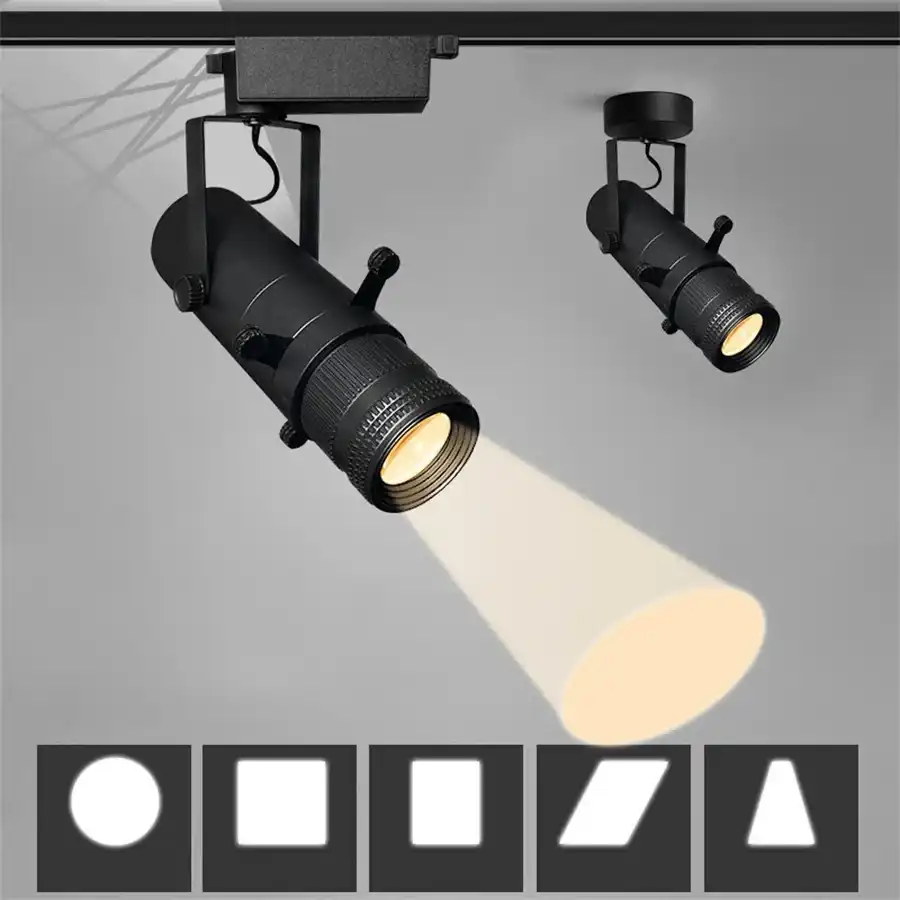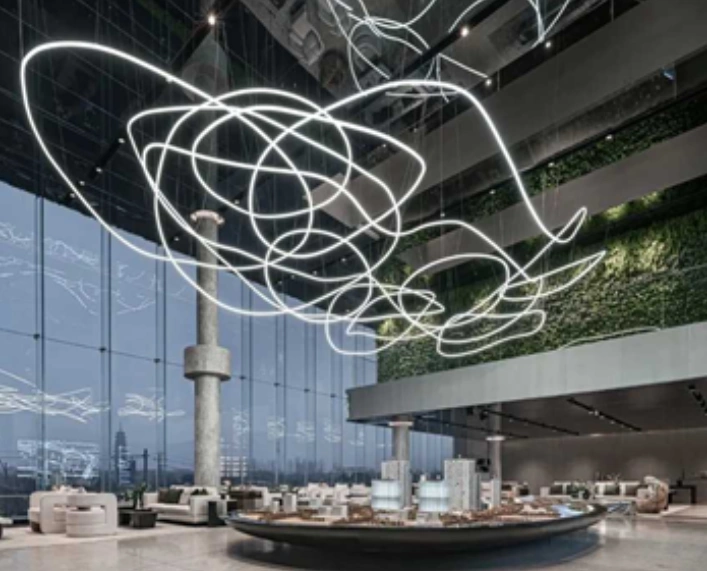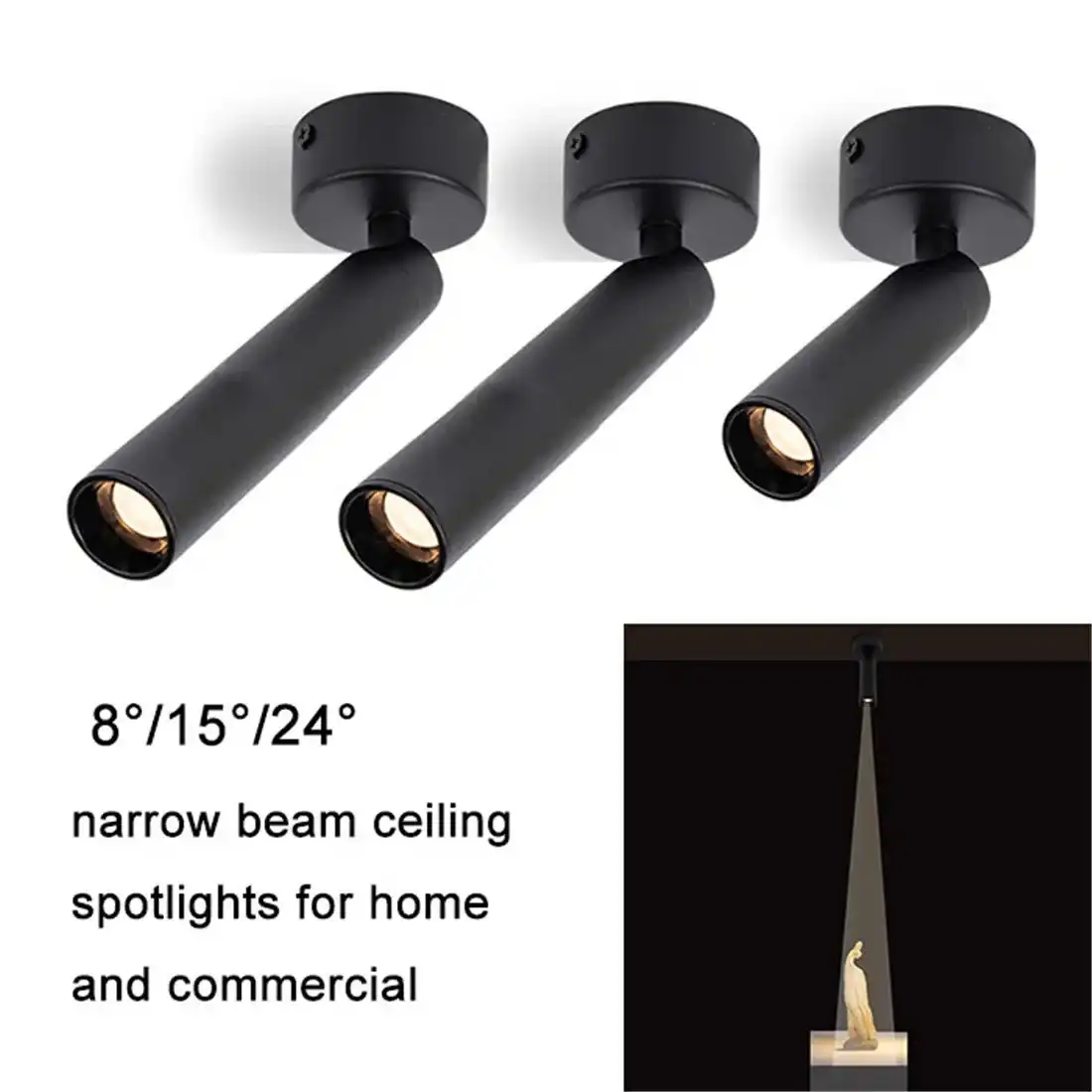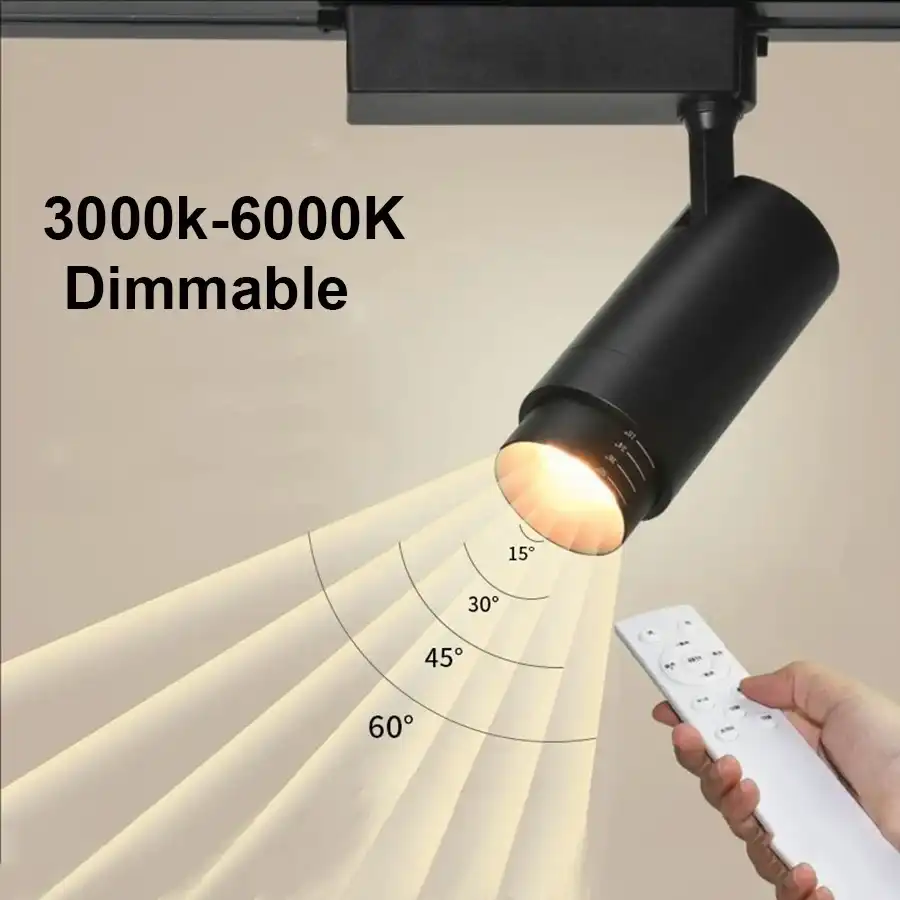What is Dimmable Track Lighting for Museum: Best Guide [2025]
Dimmable track lighting for museums is a versatile and adjustable illumination system that allows curators to precisely control light levels and direction. This innovative lighting solution combines the flexibility of track-mounted fixtures with dimming capabilities, enabling museums to create optimal viewing conditions for various exhibits. By 2025, advanced dimmable track lighting systems will incorporate smart controls, energy-efficient LEDs, and customizable color temperatures, revolutionizing how art and artifacts are displayed while preserving delicate pieces and enhancing visitor experiences.

The Evolution of Museum Lighting: From Static to Dynamic
Museum lighting has undergone a remarkable transformation over the years, moving from static, one-size-fits-all solutions to dynamic, adaptable systems. This evolution has been driven by the need to balance preservation with presentation, ensuring that artworks and artifacts are both protected and showcased in their best light.
Traditional Lighting Challenges in Museums
Historically, museums faced numerous challenges with lighting. Fixed lighting installations often resulted in uneven illumination, creating hotspots and shadows that detracted from the viewing experience. Moreover, the inability to adjust light levels meant that sensitive items were at risk of damage from prolonged exposure to bright light.
The Rise of Track Lighting Systems
The introduction of track lighting systems marked a significant improvement in museum illumination. These systems allowed for greater flexibility in fixture placement, enabling curators to direct light precisely where needed. However, early track lighting still lacked the finesse required for optimal artifact preservation and presentation.
Dimmable Track Lighting: A Game-Changer
The advent of dimmable track lighting revolutionized museum lighting design. This innovation combined the positional flexibility of track systems with the ability to control light intensity. Dimmable track lighting empowered museum staff to create nuanced lighting schemes that could be easily adjusted for different exhibits or times of day.
Benefits of Dimmable Track Lighting in Museum Settings
Dimmable track lighting offers a myriad of advantages for museums, enhancing both the preservation of artifacts and the visitor experience. Let's explore the key benefits that make this lighting solution indispensable in modern museum design.
Preservation of Sensitive Artifacts
One of the primary concerns in museum lighting is the potential damage caused by light exposure. Dimmable track lighting allows curators to precisely control the amount of light falling on each object, minimizing the risk of fading, discoloration, or structural damage to sensitive materials. By adjusting light levels based on the specific needs of each artifact, museums can extend the lifespan of their collections while still providing adequate illumination for viewing.
Enhanced Visitor Experience
Dimmable track lighting significantly improves the visitor experience by creating optimal viewing conditions for each exhibit. By adjusting light levels and directionality, museums can highlight key features of artworks, create focal points within displays, and guide visitor attention through thoughtful lighting design. This level of control allows for the creation of immersive environments that enhance the emotional and intellectual impact of exhibits.
Energy Efficiency and Sustainability
Modern dimmable track lighting systems, particularly those utilizing LED technology, offer substantial energy savings compared to traditional lighting solutions. The ability to dim lights when full brightness is not required, coupled with the inherent efficiency of LED fixtures, can lead to significant reductions in energy consumption and operating costs. This aligns with the growing focus on sustainability in museum operations and helps institutions reduce their carbon footprint.

Implementing Dimmable Track Lighting: Best Practices for Museums
To maximize the benefits of dimmable track lighting in museum settings, it's crucial to follow best practices in implementation and usage. Here are some key considerations for museums looking to upgrade their lighting systems.
Lighting Design and Planning
Effective implementation of dimmable track lighting begins with comprehensive lighting design and planning. This process should involve collaboration between lighting designers, curators, and conservators to ensure that the lighting system meets both aesthetic and preservation requirements. Considerations should include the layout of tracks, the selection of appropriate fixtures, and the creation of lighting zones that can be individually controlled.
Choosing the Right Fixtures
Selecting the appropriate fixtures is crucial for achieving optimal results with dimmable track lighting. Museums should consider factors such as color rendering index (CRI), beam angle adjustability, and compatibility with dimming systems. LED fixtures are often preferred due to their energy efficiency, long lifespan, and low heat emission, which is particularly important for sensitive artifacts.
Integration with Smart Control Systems
To fully leverage the capabilities of dimmable track lighting, museums should consider integrating smart control systems. These systems can automate lighting adjustments based on factors such as time of day, occupancy, or predetermined schedules. Advanced control systems may also incorporate sensors to monitor light levels and adjust accordingly, ensuring consistent illumination while minimizing energy consumption.
Training and Maintenance
Proper training for museum staff is essential to ensure that the dimmable track lighting system is used effectively. This includes instruction on adjusting light levels, creating and modifying lighting scenes, and troubleshooting common issues. Regular maintenance, including cleaning fixtures and checking for any necessary adjustments or replacements, is also crucial for maintaining optimal performance and longevity of the lighting system.
Conclusion
Dimmable track lighting represents a significant advancement in museum lighting technology, offering unparalleled flexibility, preservation capabilities, and visitor experience enhancement. As we look towards 2025 and beyond, the continued evolution of these systems promises even greater control, efficiency, and integration with smart museum management solutions.
By embracing dimmable track lighting, museums can create dynamic, engaging environments that protect their collections while offering visitors immersive and memorable experiences. For more information on cutting-edge LED lighting solutions for museums and other applications, please contact USKYLED at sales@uskyled.com. Our team of lighting experts is ready to help you illuminate your space with precision and style.
References
1. Smith, J. (2024). "The Future of Museum Lighting: Trends and Technologies for 2025 and Beyond." Museum Studies Quarterly, 42(3), 156-170.
2. Chen, L., & Williams, R. (2023). "Dimmable LED Track Lighting Systems: A Comprehensive Guide for Cultural Institutions." Journal of Lighting Design and Application, 18(2), 89-105.
3. Patel, A. (2024). "Smart Lighting Control in Museums: Balancing Preservation and Presentation." International Journal of Museum Management, 31(4), 412-428.
4. Brown, M., & Garcia, S. (2023). "Energy Efficiency in Cultural Heritage: The Role of Advanced Lighting Technologies." Sustainable Museum Practices, 9(1), 45-62.
5. Thompson, E. (2025). "Visitor Experience Enhancement through Dynamic Lighting Design: Case Studies from Leading Museums." Exhibition Design and Technology Review, 7(2), 78-95.

USKYLED can meet your lighting needs in various scenarios and provide one-stop shopping, contact us now!

Why You Should Choose USKYLED?
![What is Dimmable Track Lighting for Museum: Best Guide [2025]](/icms/upload/0d08cc601e7611f0b542b3ca0c0f4a83/pic/knowledgemanager-knowledgepic/e7879f32605f11f081911f363b8c1ed0/Directory/20250717 dimmable track lighting -1(1)_1752739217941.webp)

